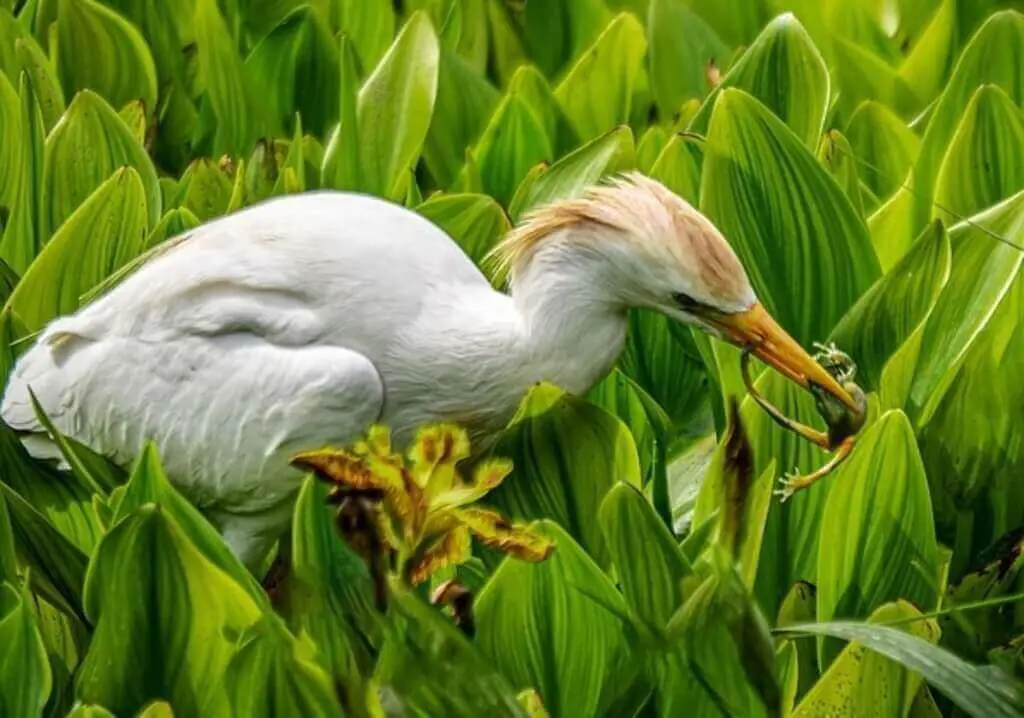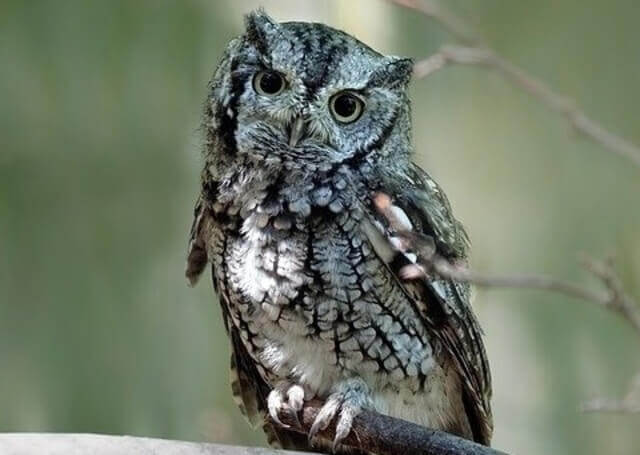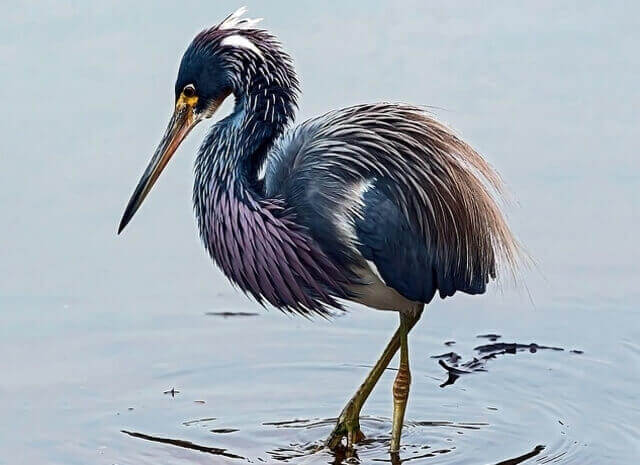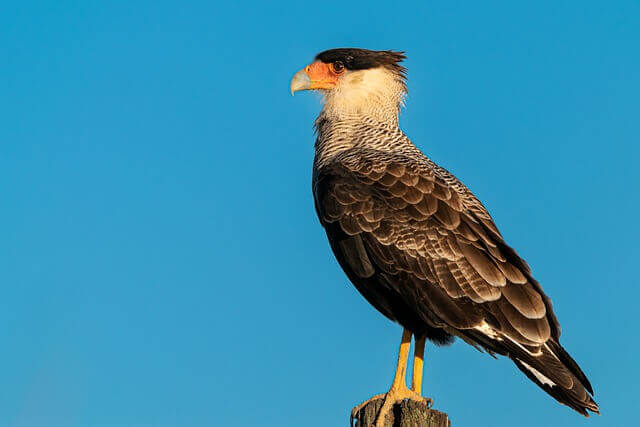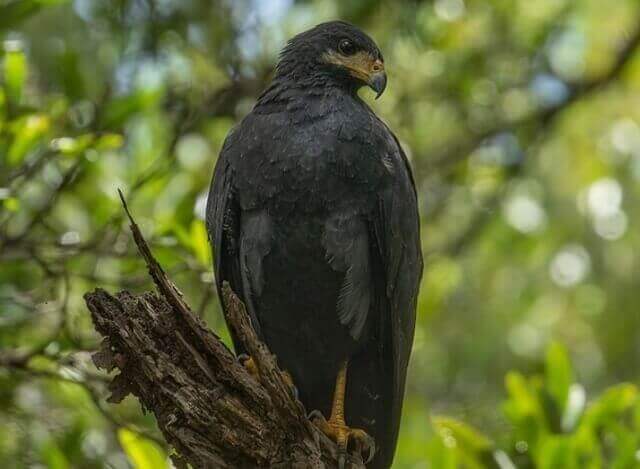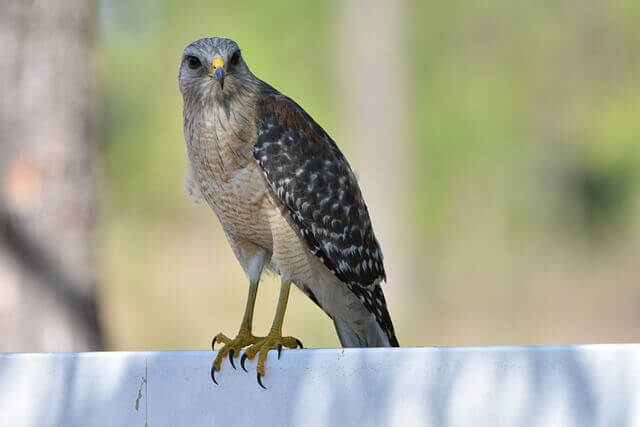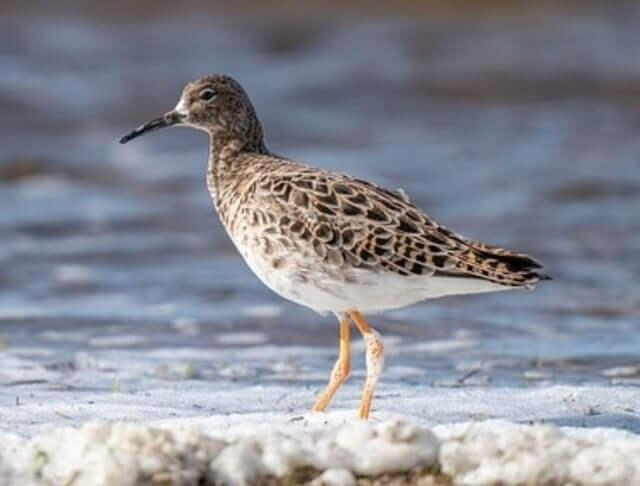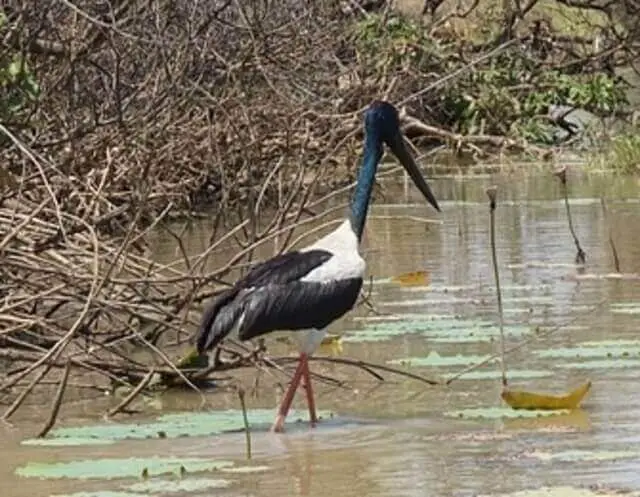Frogs are found in nearly every part of the world, except for Antarctica. These amphibians provide a number of ecological benefits to their habitats, and many people enjoy keeping them as pets.
However, some birds have been known to eat frogs – either out of curiosity or because they are hungry. In this article, we will explore 62 Birds That Eat Frogs with Photos, ID & Information about each one.
Table of Contents
- 1 Types of Birds That Eat Frogs
- 1.1 Barn Owl
- 1.2 Barred Owl
- 1.3 Boreal Owl
- 1.4 Burrowing Owl
- 1.5 Northern Saw-whet Owl
- 1.6 Eastern Screech-Owl
- 1.7 American Bittern
- 1.8 Cattle Egret
- 1.9 Chinese Egret
- 1.10 Great Egret
- 1.11 Little Egret
- 1.12 Reddish Egret
- 1.13 Snowy Egret
- 1.14 Common Grackle
- 1.15 Yellow-crowned Night-Heron
- 1.16 Green Heron
- 1.17 Black-crowned Night Heron
- 1.18 Great Blue Heron
- 1.19 Little Blue Heron
- 1.20 Tricolor Heron
- 1.21 Western Reef-Heron
- 1.22 Crested Caracara
- 1.23 Double-crested Cormorant
- 1.24 Common Crane
- 1.25 Sandhill Crane
- 1.26 American Crow
- 1.27 Blue Jay
- 1.28 California Scrub-Jay
- 1.29 Common Raven
- 1.30 Eurasian Jackdaw
- 1.31 Woodhouse’s Scrub-Jay
- 1.32 Groove-billed Ani
- 1.33 Yellow-billed Cuckoo
- 1.34 Glossy Ibis
- 1.35 Belted Kingfisher
- 1.36 Stork-billed Kingfisher
- 1.37 Collared Kingfisher
- 1.38 Broad-winged Hawk
- 1.39 Common Black Hawk
- 1.40 Ferruginous Hawk
- 1.41 Red Kite
- 1.42 Black Kite
- 1.43 Northern Harrier
- 1.44 Red-shouldered Hawk
- 1.45 Swainson’s Hawk
- 1.46 White-tailed Hawk
- 1.47 White-tailed Kite
- 1.48 Limpkin
- 1.49 Common Loon
- 1.50 Brown Thrasher
- 1.51 American Coot
- 1.52 Clapper Rail
- 1.53 Purple Gallinule
- 1.54 Greater Yellowlegs
- 1.55 Ruff
- 1.56 Loggerhead Shrike
- 1.57 Solitary Sandpiper
- 1.58 Spotted Redshank
- 1.59 Wood Sandpiper
- 1.60 Common Myna
- 1.61 Jabiru
- 1.62 Wood Stork
- 2 FAQs
- 3 Author
Types of Birds That Eat Frogs
Barn Owl
Barn owls are the most common owl in North America. They range throughout the United States and Canada, with a few outliers in Alaska and Northern California. They inhabit many different habitats, from dense forests to deserts and mountain ranges.
They hunt small mammals such as mice, rats, shrews and voles on the ground, and also prey on reptiles like snakes and lizards, amphibians like frogs and sometimes even insects or crustaceans! .
Barred Owl
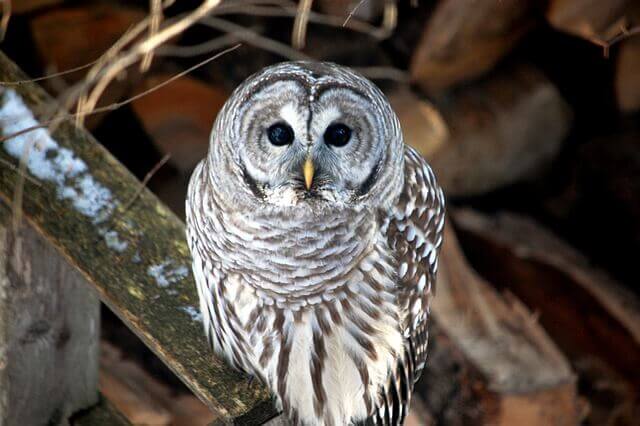
The barred owl is a medium-sized owl native to North America. Barred owls have an extensive range across North America and can be found in deciduous forests as well as mixed woodlands or swamps.
They are brown with white barring on their chest and the end of their wings. Barred owls are mainly nocturnal and live mostly on small mammals, but they will also eat insects, frogs, reptiles and other birds when given the opportunity.
Boreal Owl
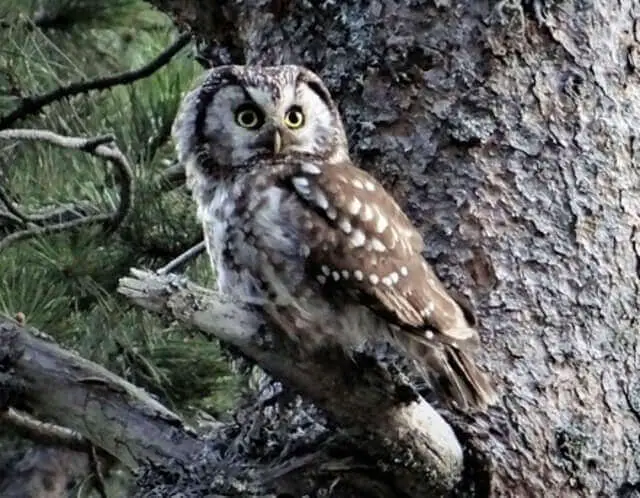
Boreal owls are known for their distinctive call. Boreal owls inhabit boreal forests in the Northern Hemisphere, ranging from Alaska to Scandinavia and across Russia.
They live primarily in deciduous or mixed coniferous-deciduous forest near lakes, ponds, bogs and rivers. They are known to eat small mammals, reptiles, amphibians, birds and other insects. The most popular prey is lemmings.
Burrowing Owl
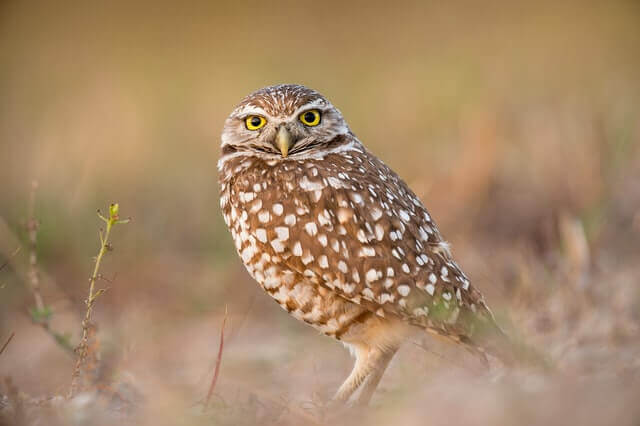
Burrowing owls are a bird that is native to North America. They live in prairies, open grasslands and deserts. Burrowing owls can be found throughout the Western United States, southern Canada and Mexico.
They will also inhabit parts of Central America, mostly Guatemala. The burrowing owl lives on small mammals such as rodents or rabbits, but they have been known to eat frogs if their preferred prey is not available.
Northern Saw-whet Owl

The Northern Saw-whet Owl is a small owl, only about 8″ inches tall. It lives in dense forested areas and can be found from the coast of California to Alaska. The Northern Saw-whet Owl is most active at night, but will sometimes come out during the day if it is overcast or cloudy.
The northern saw-whet owl’s diet consists mainly of small mammals such as voles, shrews, mice, chipmunks and lemmings, but they also eat some birds, amphibians, and insects. They eat frogs mostly when they are breeding season.
Eastern Screech-Owl
Eastern Screech Owls are found in Eastern North America and inhabit most of the United States. Their habitat ranges from wetlands to woodland forests, where they live in both tree cavities and abandoned nests of other birds.
Eastern Screech Owls feed primarily on small mammals such as mice, voles, shrews, bats, and squirrels but also eat a variety of insects including crickets, beetles, and grasshoppers. They will occasionally take frogs, but this is not their preferred food source
American Bittern
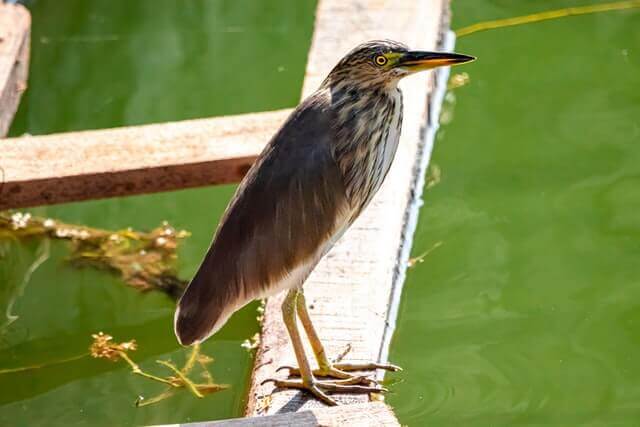
The American Bittern is a bird found in wetlands and wet prairies of North America. They are mainly herbivores, eating seeds, insects, crustaceans, and frogs. It has been noted that they will sometimes eat birds as well.
Their range spans from the east coast to central Canada to the Gulf Coast with some populations extending into Mexico.Their habitat ranges from ponds and marshes to dry uplands such as meadows or bogs where it is moist but not wet.
Cattle Egret
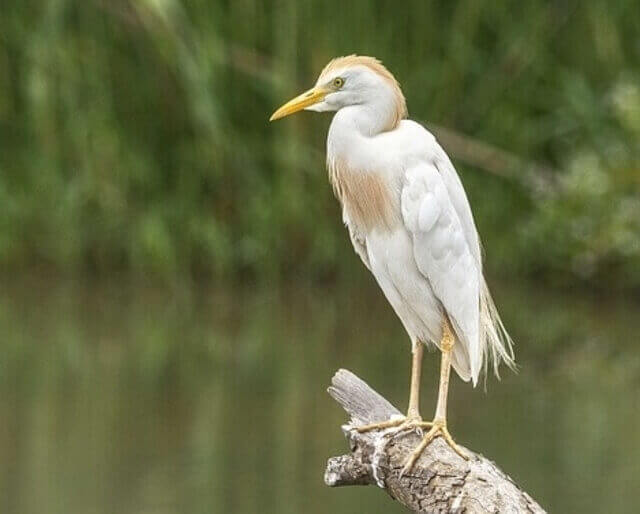
The Cattle Egret is a bird in the heron family. They have a distribution range of North America, Australia, New Zealand and parts of Europe for the purpose of controlling cattle ticks.
It’s usually seen standing on open ground near water or other wetlands feeding on insects, small fish, amphibians such as frogs or toads. They may also be seen hunting along the shoreline for prey like crabs and other crustaceans.
Chinese Egret
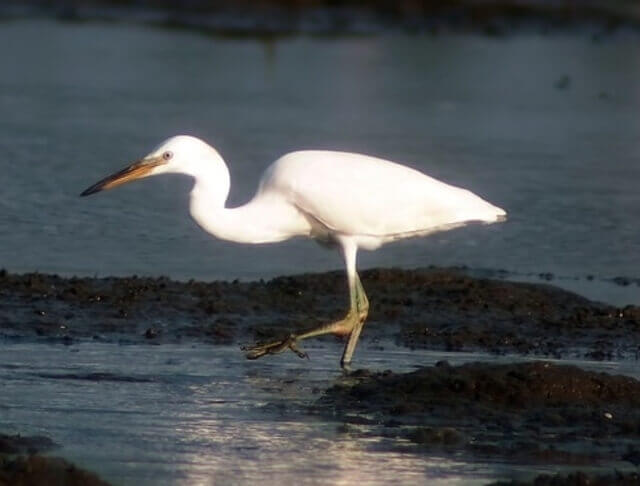
The Chinese Egret is a bird found in the East Asian region. The habitats for this egret are wetlands, estuaries and freshwater marshes. It is also sometimes seen at forest edges or in grasslands near water. It has a long, slender body and neck, which allows it to hunt fish by jabbing at them with its bill.
The diet of the Chinese Egret consists mainly of fish, frogs, insects and worms, but they will also eat other small animals such as snakes, lizards and mice when given the opportunity.
Great Egret
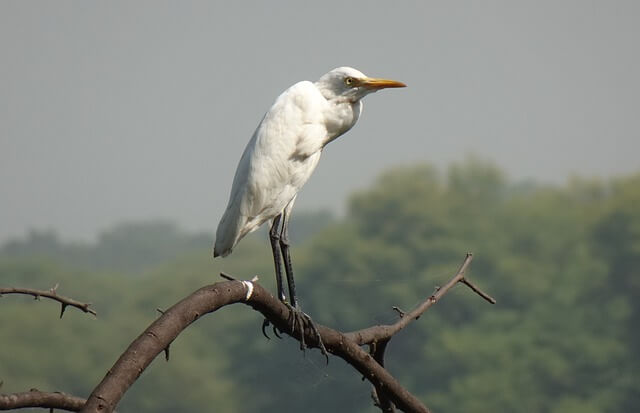
The Great Egret is a bird found in many parts of the world. The range of this species includes most of North America, Central America, and South America. Great egrets can be found in different habitats including salt marshes, freshwater wetlands, shallow pools on the coast or lake shores and streams. They are also often seen foraging at roadside ditches and farm ponds.
Great egrets have an extensive diet that includes fish such as catfish, small mammals like rodents and voles , amphibians such as frogs, crustaceans like crabs and crayfish, insects such as ants and termites, other invertebrates like worms, spiders, and clams.
Little Egret
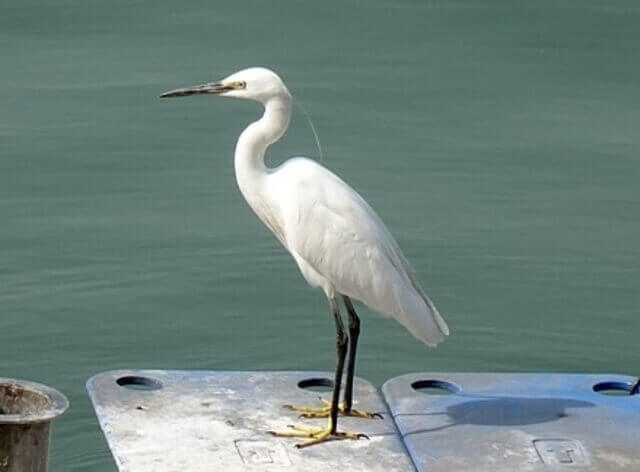
The Little Egret is a type of heron that lives in the south-east United States. The little egret is a small bird that has found its way to North America and the Caribbean. The range of this bird is now up to eastern Canada, as well as parts of Florida and Cuba. This species eats mainly fish, crustaceans, frogs, insects and other invertebrates in order to survive.
Little egrets have a wide variety of habitats including forests with or without trees, savannas (grasslands), wetlands and coastal areas such as salt marshes or mangroves.
Reddish Egret
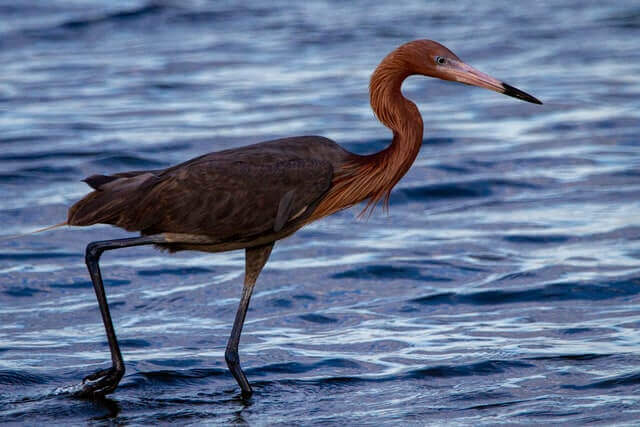
The Reddish Egret is a wading bird found in the eastern United States. They are most often seen around marshes, ponds and lakes as they forage for food. The reddish egret has a diet consisting of insects, crustaceans, small fish and frogs that it hunts by catching them with its long bill or sometimes snapping at them from shallow water.
These birds have been observed hunting together in groups to catch larger prey such as crabs or small turtles and then share the food among themselves.
Snowy Egret
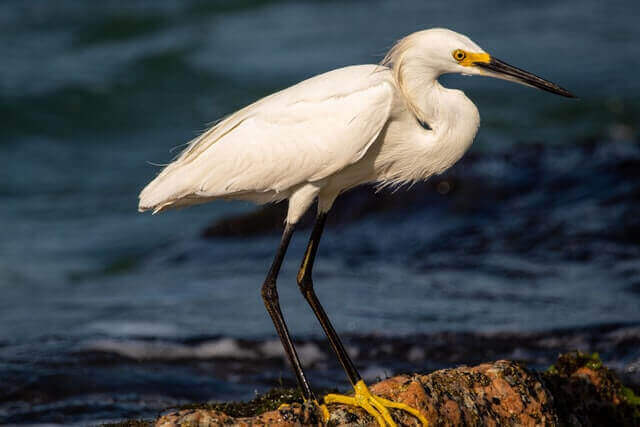
The Snowy Egret is a large bird in the heron family. They are found all over North America, from Canada to Mexico and as far south as Costa Rica. They can be seen in wetlands and on shorelines near water throughout their range.
Snowy Egrets eat fish, crustaceans, insects, amphibians and small mammals when they are hunting for food. Frogs make up part of their diet, since frogs spend most of their time at the water’s edge.
Common Grackle
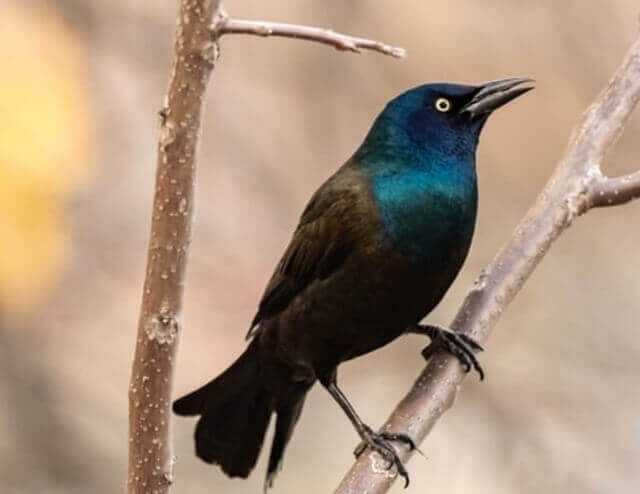
The Common Grackle is a large blackbird that lives in North America. They can be found from southern Canada to Central America and from the Atlantic coast to the Pacific coast.
Their habitat ranges from coastal areas, grasslands, agricultural fields, forest edges and wetlands. The diet of a grackle includes insects (such as beetles), earthworms, amphibians (frogs) and berries.
Yellow-crowned Night-Heron
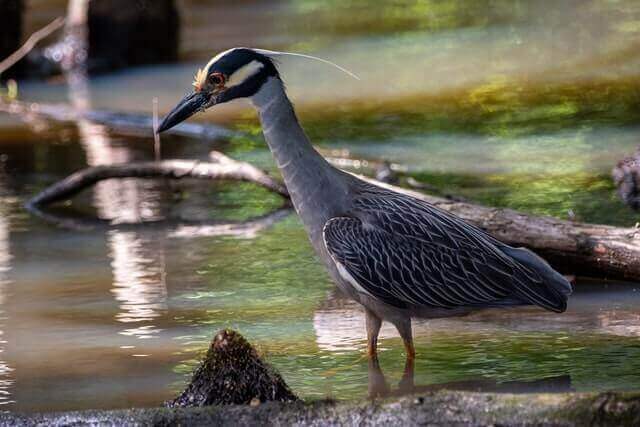
The Yellow-crowned Night-Heron is a species of heron found in North America. It can be found from the East Coast to the West Coast and has been spotted as far north as Alaska and south into Mexico. The range extends down through Central America to Colombia, Venezuela, Peru, Brazil and Paraguay.
The range of this heron is widespread, but they are typically only seen near waterways and marshy areas. This night heron eats mostly fish, amphibians and small mammals like rodents and rabbits. They will also eat snakes when the opportunity arises.
Green Heron
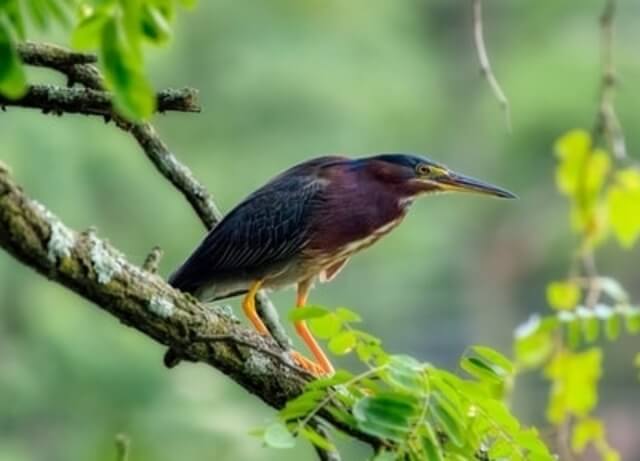
The Green Heron is a bird that inhabits North America and the Eastern coast of Asia. They are usually found in wetlands, marshes, streams and lakes. The common habitats for these birds include wetland environments such as marshlands, bogs, swamps or other watery areas where there is access to food sources such as fish and frogs.
Green Herons have been observed eating frogs, tadpoles, insects, crustaceans and small fish. These birds also tend to be solitary creatures, which may explain why they are not often seen.
Black-crowned Night Heron
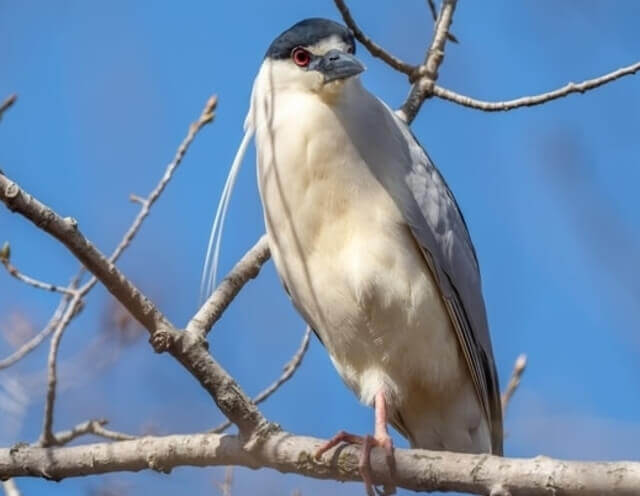
The Black-crowned Night Heron is a member of the heron family and can be found in North America, Central America, South America, and parts of Europe. They are medium-sized birds with a wingspan that reaches about 3 feet.
These nighttime hunters usually nest on trees near water sources like lakes or ponds. They primarily eat small fish, insects and frogs, but will also feed on rodents if they come across them during their nightly hunting sessions.
Great Blue Heron

The Great Blue Heron is a beautiful bird with long legs and neck. They are found all over North America, but mainly in the eastern half of the United States. They can be seen nesting on trees or cattails near bodies of water such as lakes, ponds, rivers and marshes.
These birds feed primarily on fish they catch themselves while hunting in shallow waters close to shorelines, but also eat insects, fish and amphibians like frogs.
Little Blue Heron
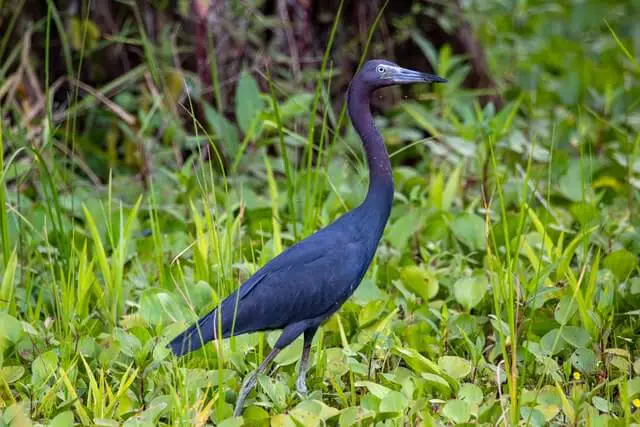
The Little Blue Heron is a small, tropical bird that inhabits the Southern United States. These birds are often seen in marshes and coastal areas, where they feed on fish and frogs. They are also found inland along waterways and near fresh water lakes, where they eat mostly tadpoles and minnows.
Little Blue Herons do not migrate; instead, they live year-round in these regions. There have been sightings of this species as far north as Maine during winter months.
Tricolor Heron
The Tricolored Heron is a very rare bird that lives in coastal areas of the Americas. It is found from North Carolina to South America, including Central America and the Caribbean.
They live in wetlands, swamps, marshes and wet meadows. They eat frogs, insects and small fish that they catch while wading through water or feeding on exposed prey at the water’s edge.
Western Reef-Heron
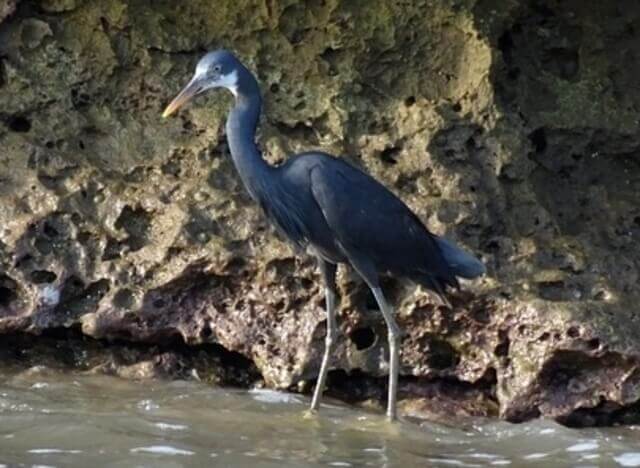
The Western Reef Heron is a small wading bird with a yellow-orange bill and long, black legs. It lives in the wetland areas of North America. They are found in the states of California, Arizona, Nevada, Oregon, Idaho and Washington.
It eats mainly frogs, as well as other insects and fish that it catches from shallow water or shorelines. The western reef heron’s habitat includes fresh and saltwater marshes, tidal flats, estuaries, baysides near rocky coasts and beaches.
Crested Caracara
The Crested Caracara is a large bird with a distinctive crest on its head. They live in the southeastern United States and Mexico, as well as Central America and South America. They live near water sources such as lakes, ponds, rivers and marshes.
These birds are opportunistic hunters who prey on anything from small mammals to lizards to snakes. The Crested Caracara will also eat frogs if they can catch them, but it is not their primary food source.
Double-crested Cormorant
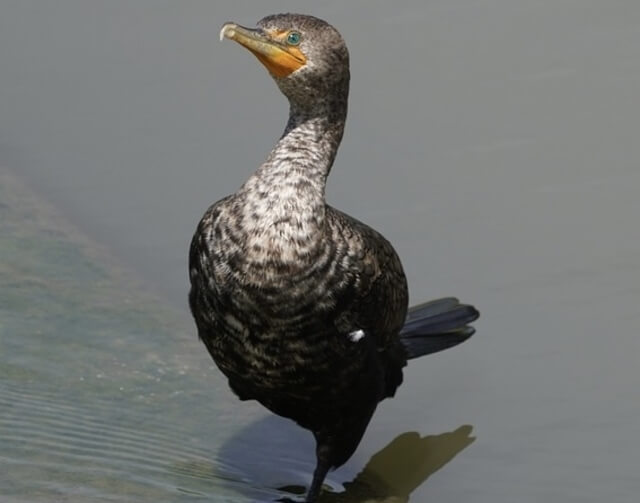
The Double-crested Cormorant is a large water bird found in North America. They are located in the Eastern United States, Canada and Western United States as well as on all the Great Lakes.
The range for this species extends as far south as Florida, with some sightings in Mexico. They are often seen near bodies of water or coastal regions where they hunt for fish, frogs and crayfish by diving into water from above the surface.
Common Crane
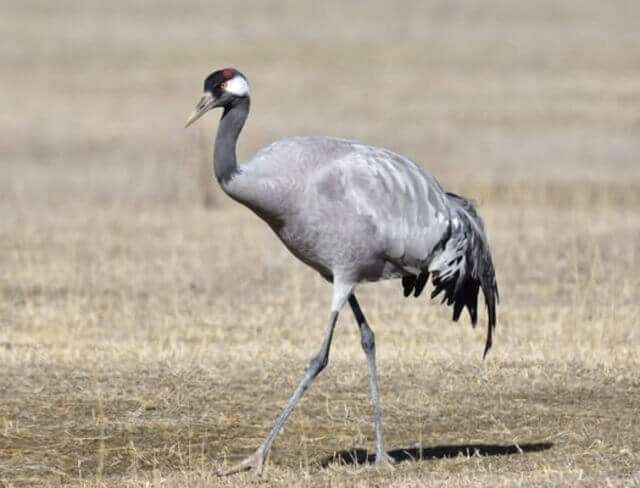
The Common Crane is a large bird in the crane family. They have an extensive range and are found throughout much of Eurasia, North Africa, India and Australia. They live in various habitats, widely depending on the region they live in, but usually consist of open plains, pastures or agricultural land with few trees or other obstructions.
Common Cranes typically eat plants such as grasses, seeds and berries along with invertebrates like beetles and spiders, but will also consume small vertebrates like frogs.
Sandhill Crane
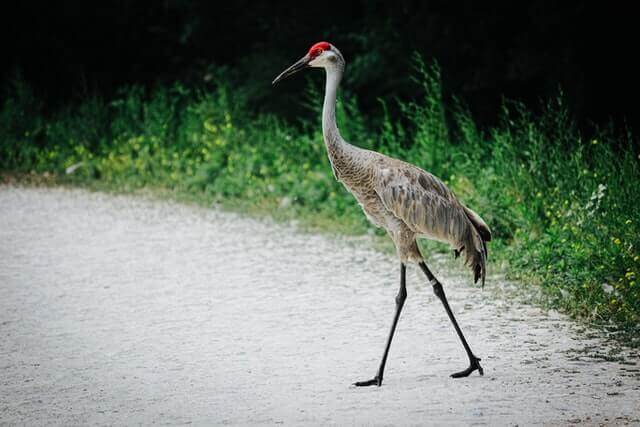
Sandhill Cranes are large, migratory birds that live in the Great Plains region of North America. Their habitat is limited to a specific range, and they typically migrate south for winter.
The cranes can be found in places such as South Dakota, Nebraska, Montana and Wyoming. They feed on invertebrates such as beetles, grasshoppers and spiders, but will also eat frogs if given the opportunity.
American Crow
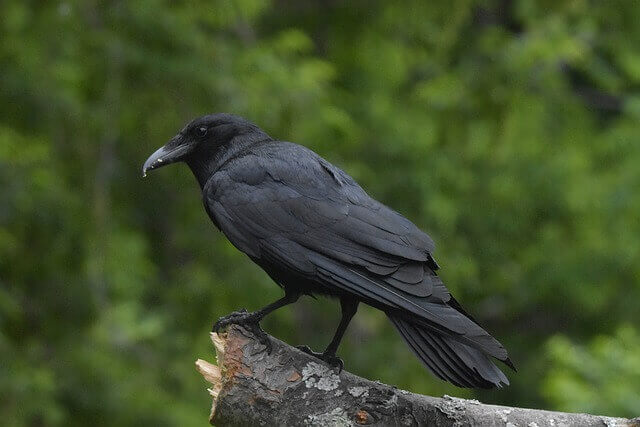
American Crows are a common type of crow found in North America, ranging from the far north to southern Canada and as far south as Mexico, with most living within the United States. They can be found in all climates but seem to prefer open areas like grasslands, wetlands or agricultural fields where they can find food easily.
Their diet consists mainly of invertebrates such as earthworms, beetles, caterpillars and spiders. They will also eat mice, bird eggs and nestlings; a few have been seen catching snakes, frogs, or fish.
Blue Jay
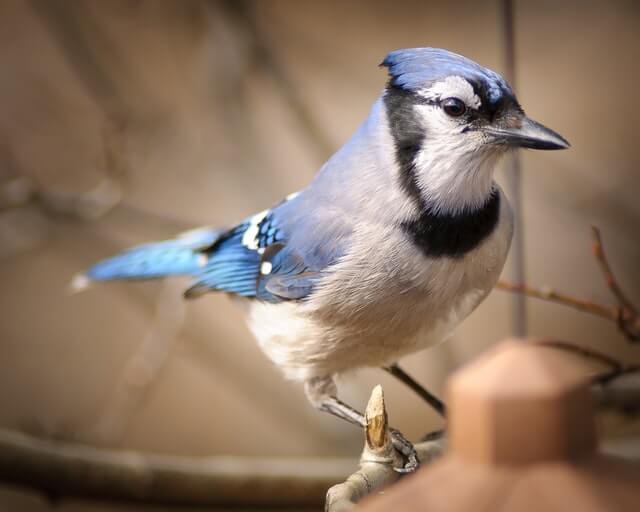
Blue Jays are members of the corvid family, and like their cousins crows and ravens, they are among the most intelligent birds in North America. They live year-round in eastern North America from southern Canada to northern Florida, and migrate northward for the winter.
The blue jay’s diet consists mainly of insects (including many agricultural pests), nuts, seeds, berries, eggs and nestlings from other birds (particularly during nesting season), small mammals such as mice or squirrels, and frogs.
California Scrub-Jay
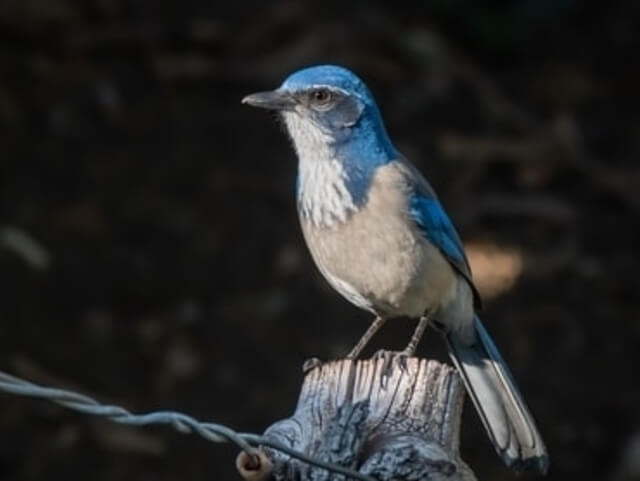
The California Scrub-jay is a jay native to the Western United States. It has been documented as ranging from Oregon, all the way down to Baja California and into northern Mexico.
The scrub-jay’s habitat is typically brushy or semi-arid areas that are densely vegetated with chaparral or oak woodland at lower elevations. This bird feeds on various types of food, but primarily acorns, berries and invertebrates such as insects and snails, as well as amphibians (frogs).
Common Raven
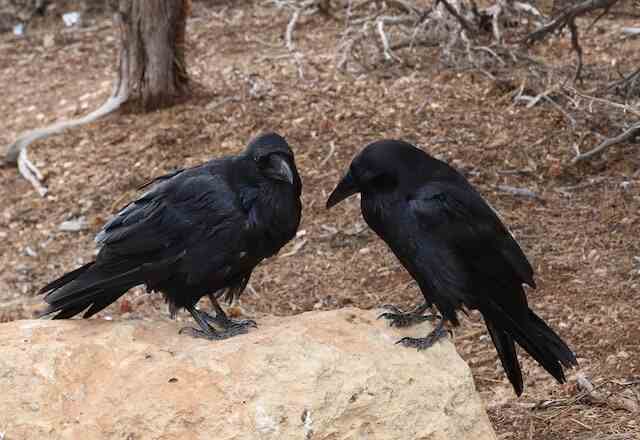
The Common Raven is a large black bird that lives throughout the Northern Hemisphere. They have very broad wings and usually fly in pairs or family groups. They eat mostly small animals, such as frogs, birds, eggs and carrion.
Ravens can also be seen eating insects like grasshoppers and crickets if they are not too big for them to swallow whole. Ravens will make their homes anywhere from tall trees to cliff sides, but prefer living near water sources.
Eurasian Jackdaw
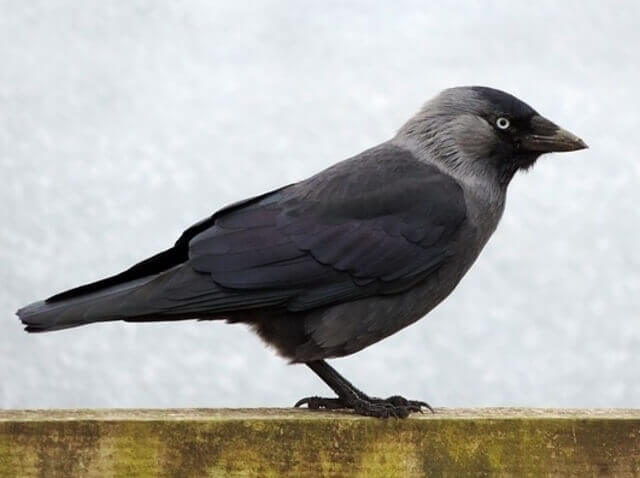
The Eurasian Jackdaw is a small bird that inhabits the Northern Hemisphere. They are quite common in Europe and Asia, but they can also be found as far south as Morocco.
The jackdaws’ habitat varies depending on where they live, but most of them will nest near trees or high up on cliffs. Eurasian Jackdaws typically eat invertebrates, fruit, vegetables and nuts, but they also have been observed eating frogs.
Woodhouse’s Scrub-Jay
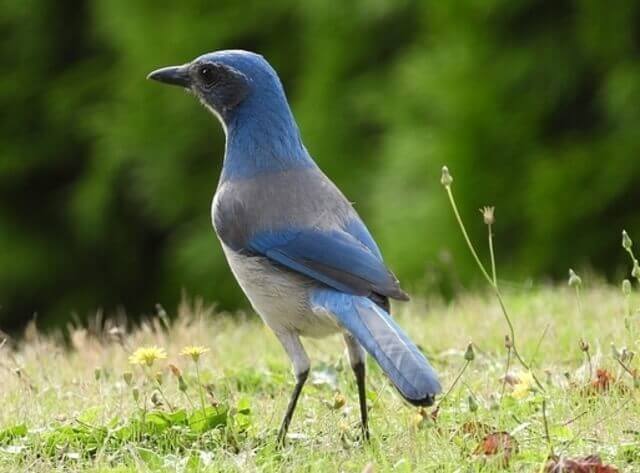
Woodhouse’s Scrub-Jay, also known as the Western Scrub-Jay, is a medium-sized bird found in scrub habitats in western North America. It can be found in California, Nevada, Arizona, Utah and New Mexico. The Woodhouse’s Scrub-Jay eats various insects and berries from plants and trees.
They also enjoy eating small animals such as frogs, lizards, mice or other small rodents. These birds nest on the ground near streamsides or wet areas but are usually found at higher elevations of forests which have less moisture due to being farther away from water sources than lower elevations.
Groove-billed Ani
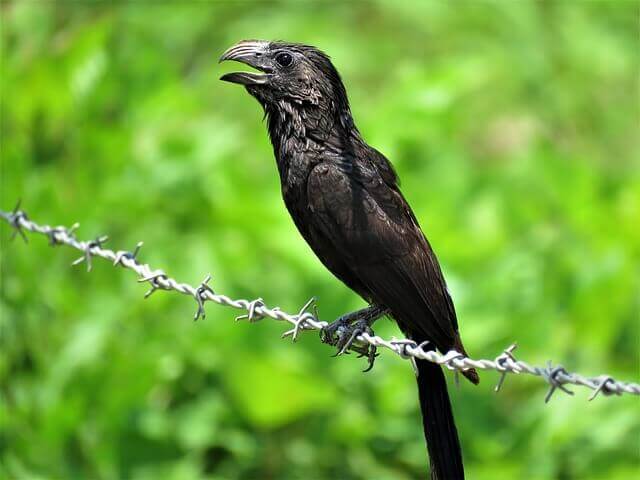
The Groove-billed Ani is a bird in the cuckoo family. They are mainly found in South America, but have been spotted as far north as Texas and Kansas. These birds usually inhabit thick forest areas near water sources, such as swamps or marshes. They can also be found around open grasslands with tall trees that grow close to the ground.
They eat many different types of bugs, small animals like lizards, frogs, insects and sometimes they even feed on plant material such as fruits or seeds when they are out of food.
Yellow-billed Cuckoo
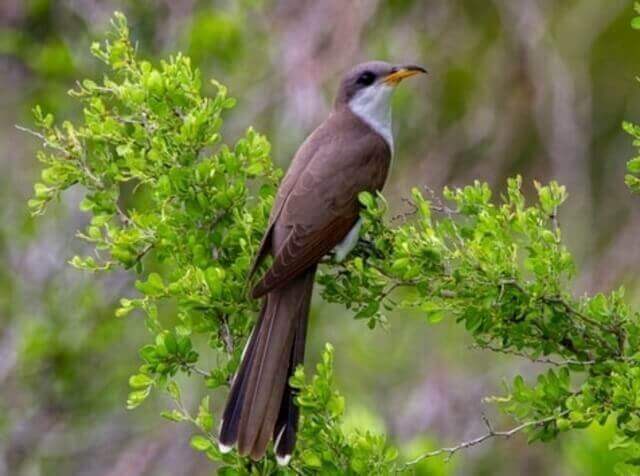
The yellow-billed cuckoo is a bird that lives in North America. It can be found in the United States, Canada and Mexico. Their habitat ranges from forests to mountains and wetlands, but they are most commonly found near streams or lakes.
They feed on worms, slugs, caterpillars and frogs as well as other insects they find while flying through the air looking for food sources.
Glossy Ibis
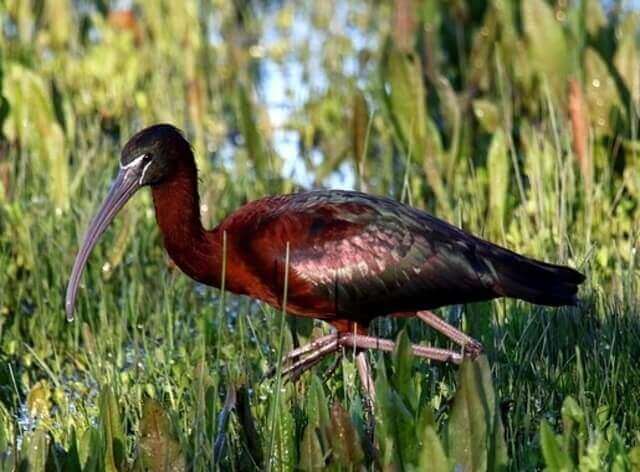
The Glossy Ibis is a bird that is native to parts of Asia, Australia and Africa. They are not very common in the United States. They can be found in tropical and subtropical wetlands. The glossy ibis is an omnivore, but it mainly eats insects, crustaceans, amphibians and small fish.
They will also eat plant material like seeds and fruit when they are available. In the wild they have been observed to prey on frogs which suggests that frogs may be part of their diet as well.
Belted Kingfisher

Belted Kingfishers are one of the most common birds in North America. They live on every continent except Antarctica, and their range extends from coast to coast in Canada, south to Central America and east to the eastern seaboard of the United States.
Belted Kingfishers can be found living near bodies of water as well as inland lakes, streams, ponds and wetlands. Their diet consists mainly of fish and amphibians, but they also eat insects like crickets, grasshoppers and beetles.
Stork-billed Kingfisher
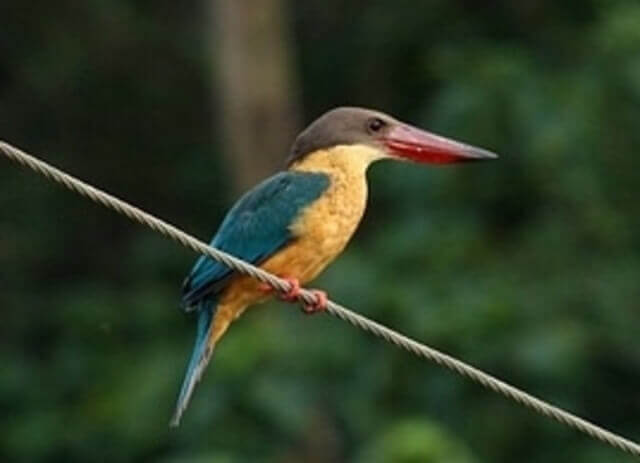
Stork-billed Kingfishers are a colorful bird that is native to the forests of Southeast Asia. They have very long bills, which make them appear like they’re always carrying something in their beaks.
The kingfisher’s diet includes insects and small fish, but it has also been known to eat frogs and lizards as well. The most common habitat for these birds is near water, such as lakes or streams, where they can easily find food while hunting.
Collared Kingfisher

The Collared Kingfisher is a small, common bird found in southern Asia, Australia, Arabian Gulf and Red Sea. It lives near fresh water streams with rocks or vegetation.
The kingfisher’s diet consists of aquatic animals such as fish and frogs, which it finds by sight under the surface of the water while hovering over it or by searching along the banks.
Broad-winged Hawk

The Broad-winged Hawk is a common bird of prey found in North America. They are considered to be the most widely distributed hawk species, with about 75% of their population residing in North America. They can also be found throughout Central and South America, as well as much of Canada and Alaska.
The Broad-winged Hawk’s diet consists primarily of small mammals such as rabbits, rodents, squirrels and other birds, but they will also eat lizards, snakes and frogs when available.
Common Black Hawk
The Common Black Hawk is a medium-sized bird of prey that lives in North America. They are very common and can be found in most parts of the United States, Canada, Mexico and Central America. The black hawk has the following features: wingspan of four feet, body length of twenty inches and weighs about two pounds.
These birds have very keen eyesight, which they use to hunt prey on the ground or in trees. The common black hawk hunts small mammals such as mice, squirrels and rabbits, but also eats reptiles, amphibians and insects when it can’t find any other food sources nearby.
Ferruginous Hawk
The Ferruginous Hawk is a bird of prey found in North America. It is the largest hawk native to North America and one of the heaviest members of the genus Buteo.
They are opportunistic hunters, taking whatever prey they can find from small mammals to other birds including owls, herons and even large waterfowl like ducks. They nest on high cliffs or trees where they have an excellent view for hunting their next meal.
Red Kite
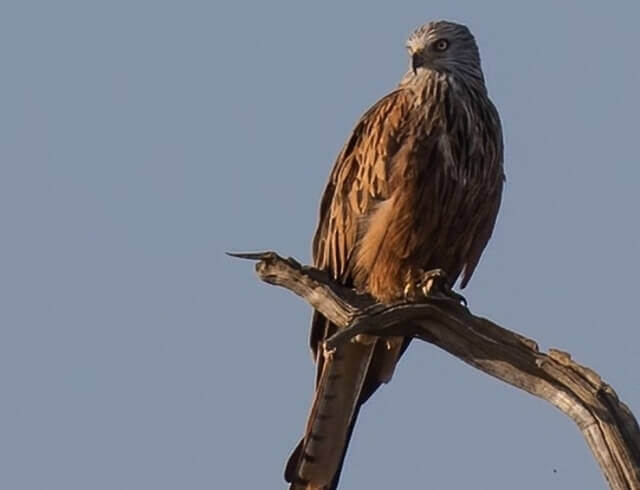
The Red Kite is a bird of prey that is native to Europe and Asia. It is also found in North Africa, South America, the Caribbean and Australia. The red kites diet consists mainly of small mammals, birds, reptiles and amphibians.
These types of animals make up around 98% of their diet. They also like to eat dead things such as fish and carrion when they find them, which can account for the other 2%.
Black Kite
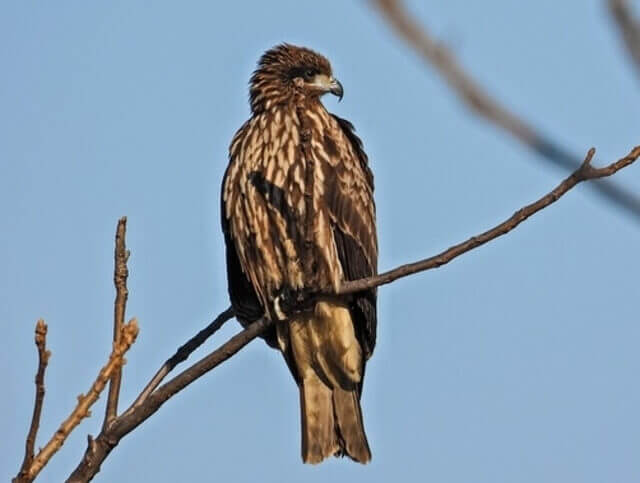
The Black Kite is a small bird of prey that can be found in many parts of the world. They have been seen in Europe, Asia and Africa. In North America they are found in Texas, Louisiana and New Mexico. The black kite’s diet consists mainly of reptiles such as lizards, snakes and frogs.
However, they also eat mammals such as rodents or even other birds! They usually hunt for food by watching from an elevated position on trees or poles until their prey comes by.
Northern Harrier

The Northern Harrier is a common and widespread bird of prey. Northern Harriers are commonly found in the Americas, Europe, Asia and Africa. They live in a variety of habitats from forests to grasslands and are generally seen as an insectivore or scavenger.
The harriers diet consists mainly of small mammals such as mice, shrews, voles and bats, but they also eat other birds, like sparrows and finches. In some cases they eat frogs, but this varies depending on location and other factors such as how hungry they are when catching their prey for the day.
Red-shouldered Hawk
The Red-shouldered Hawk is a common bird in North America. It can be found in forests, fields and near rivers. The diet of the red-shouldered hawk includes small mammals, birds, reptiles and amphibians.
One notable frog that they eat is the American Bullfrog, which is typically 1.5 pounds (0.69 kg). They also prey on smaller frogs such as Green Frogs or Tree Frogs.
Swainson’s Hawk
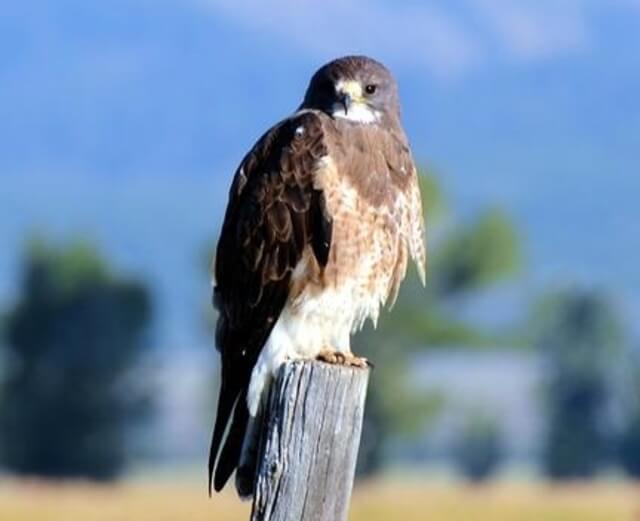
The Swainson’s Hawk is a medium-sized hawk native to North America. They are considered a “habitat generalist” and inhabit most regions of the continent, including deserts, mountains, grasslands and forests.
Swainson’s Hawks have one of the widest ranges in North America because they can survive in such varied habitats. The hawks also have diverse diets that include rodents, reptiles, amphibians and other birds – making them extremely adaptable hunters.
White-tailed Hawk
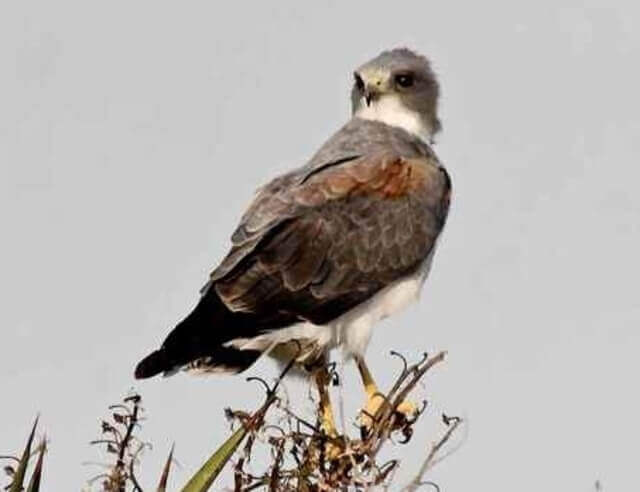
The White-tailed Hawk is a medium-sized bird of prey, found in tropical and subtropical areas. The range includes parts of North America (especially the southwestern United States), Central America, South America and Africa. There are many types of habitat where they can be found such as coastal dunes, mountain slopes, pine forests or mixed forest with pine trees.
They will make their home on cliffs, tall trees or on the ground in open country. White-tailed Hawk feeds on frogs, snakes, lizards, other birds and rodents.
White-tailed Kite
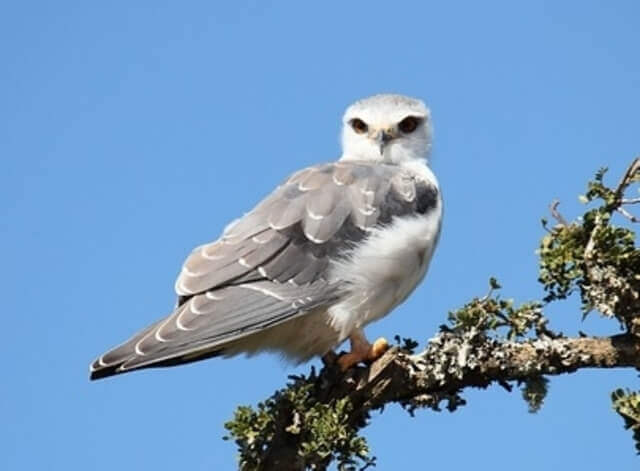
The White-tailed Kite is a medium-sized bird of prey. They are known to inhabit the lowlands and uplands in North America, Central America, South America and Eurasia. Their diet consists mainly of small mammals such as mice, shrews and other rodents, but they also eat lizards, snakes and frogs.
It is estimated that there are approximately 50% more kites now than there were 20 years ago because their population has been growing steadily since the 1970s.
Limpkin
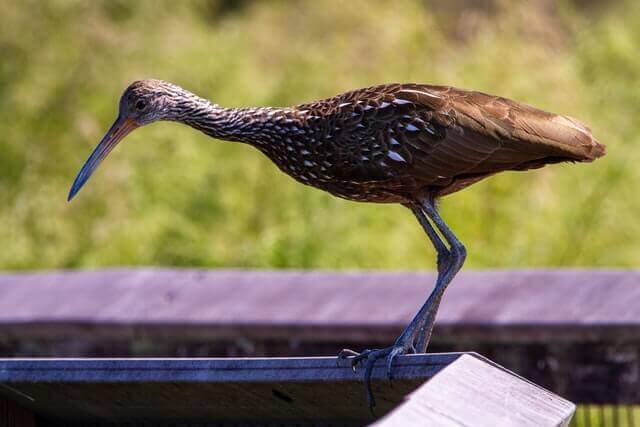
The Limpkin is a large, brown water bird that feeds on insects and frogs. They have a long bill with many grooves for capturing prey. They can be found in freshwater marshes, mangrove swamps, tidal flats and coastal wetlands of the Americas from Florida to northern Argentina.
The Limpkin’s diet consists mainly of invertebrates such as insects and small crustaceans like crabs and shrimp, but they also eat small fish, amphibians (frogs), and snails.
Common Loon
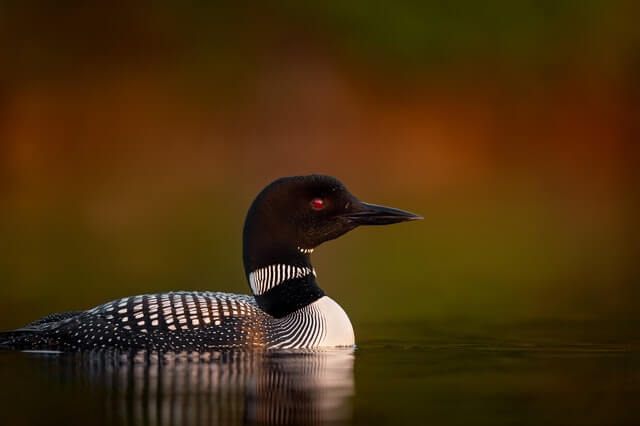
The Common Loon is a member of the Gaviiformes order, with close cousins being the grebes and penguins. The loon lives in fresh water lakes, ponds and streams all over North America. They prefer large bodies of water because they feed on fish, frogs and small animals like insects or crustaceans.
Common Loons have long, slender bills that are specialized for catching fish underwater by diving into the water from about 2 meters above it to catch prey at depths of about 3 to 4 meters. Common Loons have also been observed picking up food by surface-skimming, when the loon swims at a low altitude just above the water’s surface and dabs its bill into the water from time to time.
Brown Thrasher
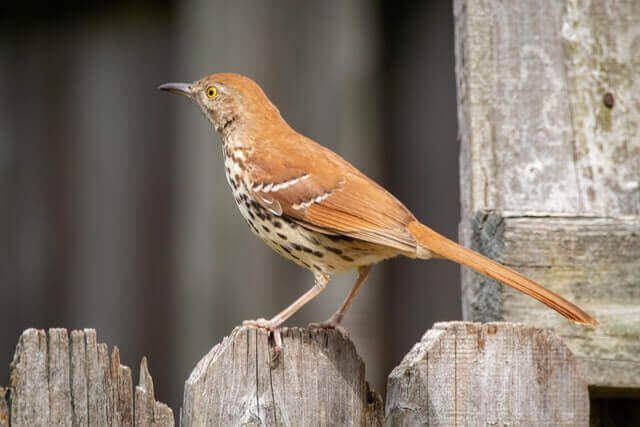
The Brown Thrasher is a small songbird found in North America. They are usually found near shrubs and trees, though they have been seen in more open areas as well. Brown Thrashers eat a variety of insects such as ants, beetles, flies and wasps.
Other food sources include snails, spiders and centipedes. They also will occasionally eat other invertebrates like frogs or earthworms if the opportunity arises; however, this behavior is rare.
American Coot
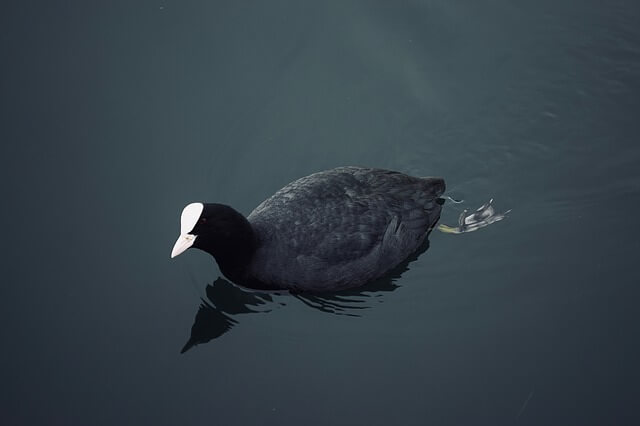
The American Coot is a small freshwater bird that prefers to live near marshes, ponds and other wetlands. They are omnivores and will eat anything from seeds to frogs. American Coots prefer to live in wetlands, including marshes, ponds and other aquatic habitats.
These birds have been observed eating seeds as well as the occasional frog or small fish. The coot has an interesting habit of storing food for later consumption by using its bill like a shovel when searching for food on the bottom of the lake.
Clapper Rail

Clapper rails are a small bird that is a member of the rail family. Clapper rails live in freshwater and saltwater marshes, wet meadows, swamps, and grassy ponds with standing water up to two feet deep.
The most notable feature about clapper rails is their long bills, which they use to probe for food on the ground or underwater. Clapper rails have an omnivorous diet which includes snails, worms, frogs and insects, but has been observed eating dead fish as well.
Purple Gallinule
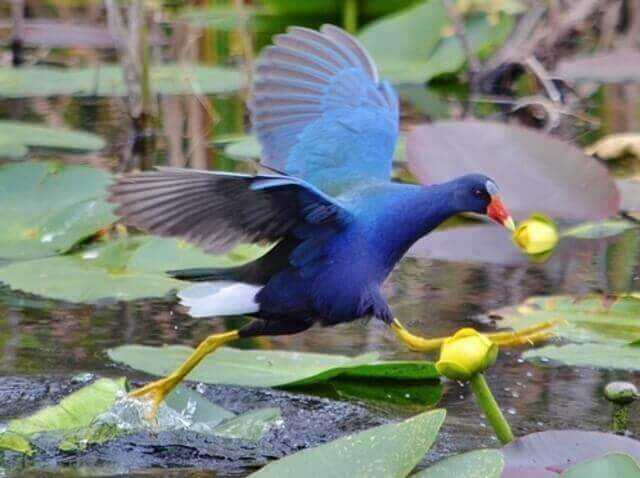
The Purple Gallinule is a small swamp-dwelling bird found in Florida, Louisiana and the Caribbean. The Purple Gallinule is found in marshes and wetland areas of the southeastern United States. The Purple Gallinule has short legs that are set back on its body, which helps it walk through water or mud.
It mainly eats insects, aquatic invertebrates and frogs, but also seeds and fruit. Purple Gallinules have beautiful feathers with blue-green sheen on their heads. They are relatively common throughout their range, with populations stable
Greater Yellowlegs
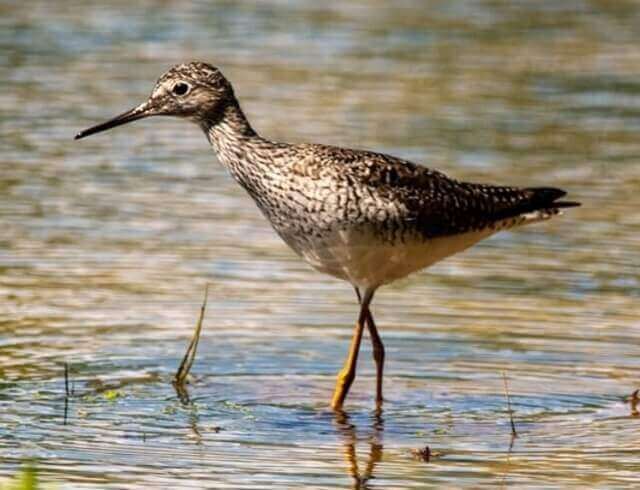
The Greater Yellowlegs is a small shorebird with long, bright yellow legs. The species was once common in North America, but has declined drastically in recent years.
Greater Yellowlegs are opportunistic feeders and will eat almost anything they can find, including insects, fish, worms and frogs. They prefer to live near water because this provides them with food as well as places to rest and nest.
Ruff
The Ruff is a common species of bird that lives in Europe and Asia. They are not typically found in North America, but the population does live near Alaska.
The Ruff has many subspecies, which vary from brown to black colors with distinctive markings on their heads. Ruffs eat mainly insects and small mammals, but some have been seen eating frogs.
Loggerhead Shrike
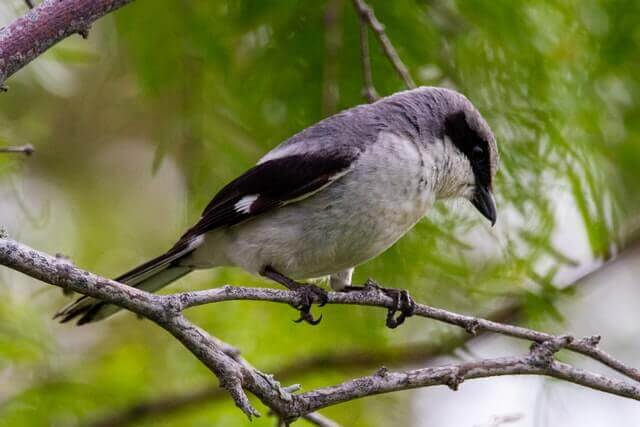
The Loggerhead Shrike is a bird found in the eastern United States and parts of Canada. They have short wings, a long tail, black-and-white striped head, grayish underparts and a dark back.
Their diet consists mainly of insects, but they also eat small mammals such as mice or voles. Loggerhead Shrikes are ground feeders that nest on the ground, making them susceptible to predation by domestic cats, dogs and raccoons.
Solitary Sandpiper
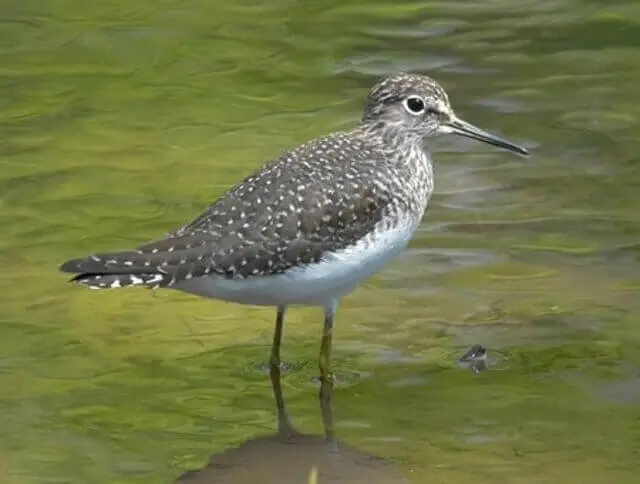
The Solitary Sandpiper is a bird species that lives in North America. They live on the coastlines of Louisiana, Texas and California. They can be found year-round, but are most abundant during their breeding season from March to September.
They mainly eat small insects and crustaceans like shrimp or crabs; however, they also occasionally consume frogs and other amphibians such as salamanders, lizards, turtles and snakes.
Spotted Redshank
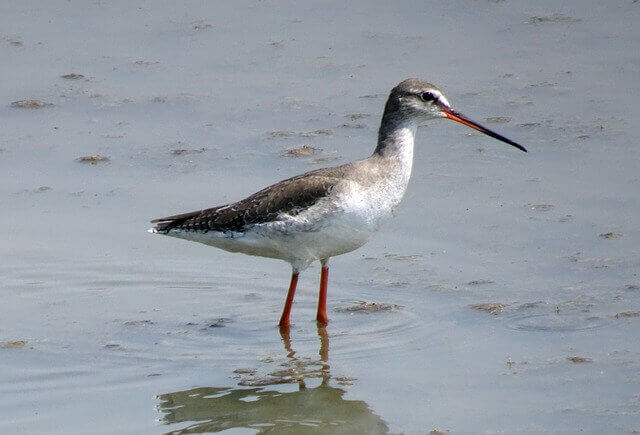
Spotted Redshank is a small bird that lives in the coastal regions of North America. These birds are also found in South America and Europe, but not Africa or Asia. They feed on various small creatures such as crabs, fish, worms and frogs.
The spotted redshanks prefer to live near ponds with dense vegetation around them for protection from predators. The nests they build are made out of grasses and leaves; it is said that some are up to 6 feet high!
Wood Sandpiper
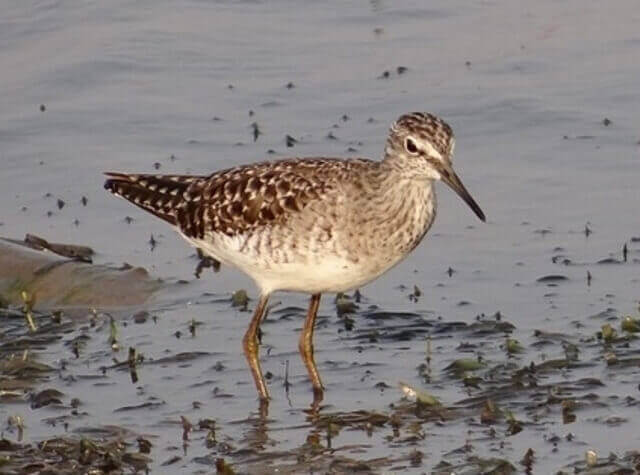
The Wood Sandpiper is a migratory bird that breeds in northern Canada and Alaska. They winter on the west coast of North America from British Columbia to southern California, but may also be found inland in wetter areas.
They live in freshwater marshes and streams. Wood Sandpipers are omnivores, which means they eat both plants and animals. Their diet includes insects, worms, small fish, crustaceans, tadpoles and frogs
Common Myna
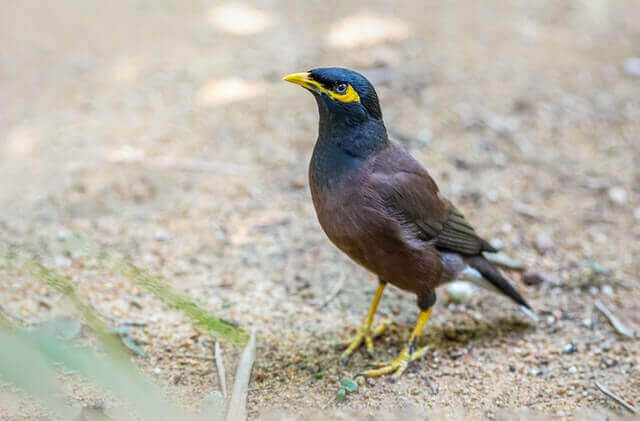
The Common Myna is a species of bird native to Asia. The habitat of the common myna varies depending on the season, however they are found in urban areas throughout India, Sri Lanka and South East Asia during most times of year.
It eats various insects such as grasshoppers, beetles and locusts as well as some fruit including mangoes, bananas and pomegranates. The myna also eats birds’ eggs and frogs, in addition to nectar from plants such as the Acacia tree.
Jabiru
The Jabiru is a large stork-like bird. The jabiru eats frogs, snakes and other small animals. The jabirum lives in the Amazon rainforest and along rivers in Brazil, Venezuela, Colombia and Ecuador.
Jabirus are found near waterways or on low-lying marshy ground, where they feed on fish such as piranha that live there; occasionally eating crabs and frogs too. They will also catch mice when the opportunity arises!
Wood Stork
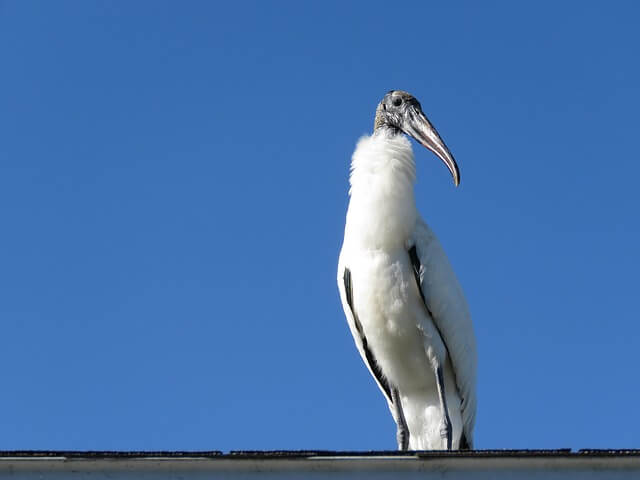
The wood stork is a large bird that inhabits the coastal regions of North America. They have been known to range as far north as Maine and down to Texas, but they mostly stay within Florida, Louisiana, Mississippi and Georgia.
Wood storks are omnivores, which means they eat both meat and plants. The wood storks diet consists mainly of frogs, insects, snakes, fish and crustaceans.
FAQs
Do birds eat poisonous frogs?
Some birds have developed resistance to the toxins found in certain poisonous frogs. They’ve adapted to eat specific parts of the frog while avoiding toxic skin secretions. However, not all birds can safely consume poisonous frogs.
Do birds eat frogs eggs?
Yes, some birds do eat frog eggs. This behavior is more common among waterbirds and can impact frog populations, especially in wetland ecosystems.
Do birds of prey eat frogs?
Yes, birds of prey, such as hawks and eagles, may include frogs in their diet. However, this largely depends on the bird species and its preferred prey.
Do birds eat baby frogs?
Birds can consume tadpoles and young frogs, especially if they have access to aquatic environments where tadpoles are present. It’s a common food source for many bird species.
How do frogs avoid being caught?
Frogs have evolved various defense mechanisms to avoid being caught by birds and other predators. These include camouflage, toxic skin secretions, and rapid escape through their powerful hind legs and jumping ability. Some frogs also display warning coloration to signal their toxicity to potential predators.

